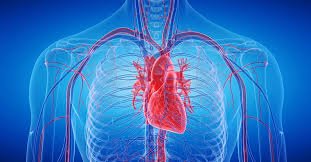Imagine you’re standing in a crowded room when suddenly someone clutches their chest and collapses. Is it a heart attack? Or could it be cardiac arrest? While both are serious heart emergencies, they’re very different in what causes them, how they show up, and how they should be treated. Knowing the difference in that critical moment could save a life.
What Is a Heart Attack?
According to the American Heart Association, someone in the U.S. has a heart attack roughly every 40 seconds. A heart attack—also known as a myocardial infarction—happens when one or more arteries that supply blood to the heart get blocked. Usually, it’s because of a buildup of plaque made of fat, cholesterol, and other substances. If a piece of this plaque breaks off, it can cause a clot that blocks blood flow to the heart.
When the heart muscle doesn’t get enough oxygen, it starts to die. That’s why quick treatment is critical.
Common signs of a heart attack include:
- Chest pain or discomfort: It might feel like squeezing, pressure, or fullness that lasts a few minutes or comes and goes.
- Pain spreading elsewhere: You might feel pain in your arms (especially the left), back, neck, jaw, or stomach.
- Shortness of breath: It can happen with or without chest pain.
Women’s symptoms can look a little different:
- Unusual tiredness
- Dizziness or lightheadedness
- Nausea or vomiting
Not every heart attack is sudden and dramatic. Some start slowly with mild symptoms, sometimes mistaken for indigestion or muscle strain. Others hit hard and fast. And some heart attacks, called silent heart attacks, have symptoms so subtle you might not realize what’s happening.
What Is Cardiac Arrest?
Cardiac arrest is a sudden, unexpected loss of heart function, breathing, and consciousness. Unlike a heart attack, which is about blood flow, cardiac arrest is caused by an electrical problem that throws off the heart’s rhythm. The heart can go into ventricular fibrillation, where it quivers instead of pumping blood properly.
When this happens, blood stops moving to the brain, lungs, and other vital organs. Without quick action—like CPR or a shock from an AED (automated external defibrillator)—a person can die within minutes.
Common signs of cardiac arrest include:
- Sudden collapse and unresponsiveness
- No pulse
- No normal breathing or only gasping
Every minute without help reduces the chance of survival by 7 to 10 percent. Time is everything.
What Causes Heart Attacks and Cardiac Arrest?
Though heart attacks and cardiac arrest are different, a heart attack can sometimes trigger cardiac arrest if the heart’s electrical system is badly damaged.
Common causes of heart attack:
- Coronary artery disease (most common)
- Blood clots from ruptured plaque
- Rare spasms of the coronary arteries
Common causes of cardiac arrest:
- Dangerous arrhythmias like ventricular fibrillation
- Heart conditions like cardiomyopathy or heart failure
- Genetic issues like Long QT Syndrome
- External events like drug overdose or electric shock
Shared Risk Factors
Some risks raise the chances for both heart attacks and cardiac arrest, including:
- Age (men over 55, women over 65)
- Smoking
- High blood pressure
- High cholesterol
- Diabetes
- Obesity
How to Respond in an Emergency
If you think someone is having a heart attack:
- Call 911 immediately. Don’t wait more than five minutes.
- Keep the person calm, seated, and still.
- If they’re not allergic to aspirin, have them chew a tablet to help reduce clotting.
- Don’t try to drive them to the hospital unless absolutely necessary. EMS teams can start lifesaving care on the way.
- If you think you’re having a heart attack, never drive yourself. Call for help immediately.
If someone collapses and isn’t responsive:
- Call 911 right away.
- Start hands-only CPR: Push hard and fast in the center of the chest at 100–120 beats per minute (think of the song “Stayin’ Alive” for rhythm).
- Use an AED if one is available. It will guide you step-by-step, even if you’ve never used one before.
Remember: doing something is better than doing nothing. Your quick actions could mean the difference between life and death.
Protecting Your Heart: Prevention and Preparation
Learn CPR: Taking a CPR class can help you act confidently during emergencies. Classes are available online or in-person through groups like the American Heart Association.
Get familiar with AEDs: Many public places now have AEDs. Take a minute to notice where they are when you’re out—you never know when you might need one.
Adopt heart-healthy habits:
- Stay active: Aim for 150 minutes of moderate exercise each week.
- Eat healthy: Load up on fruits, veggies, whole grains, lean proteins, and healthy fats.
- Quit smoking and limit alcohol: Smoking is one of the top causes of heart disease.
- Manage stress: Mindfulness, yoga, or deep breathing can help.
- Get regular checkups: Monitoring blood pressure, cholesterol, and blood sugar can catch heart problems early.
By understanding the difference between a heart attack and cardiac arrest—and knowing how to respond—you’re not just protecting yourself. You could be the hero someone else needs when every second counts.
